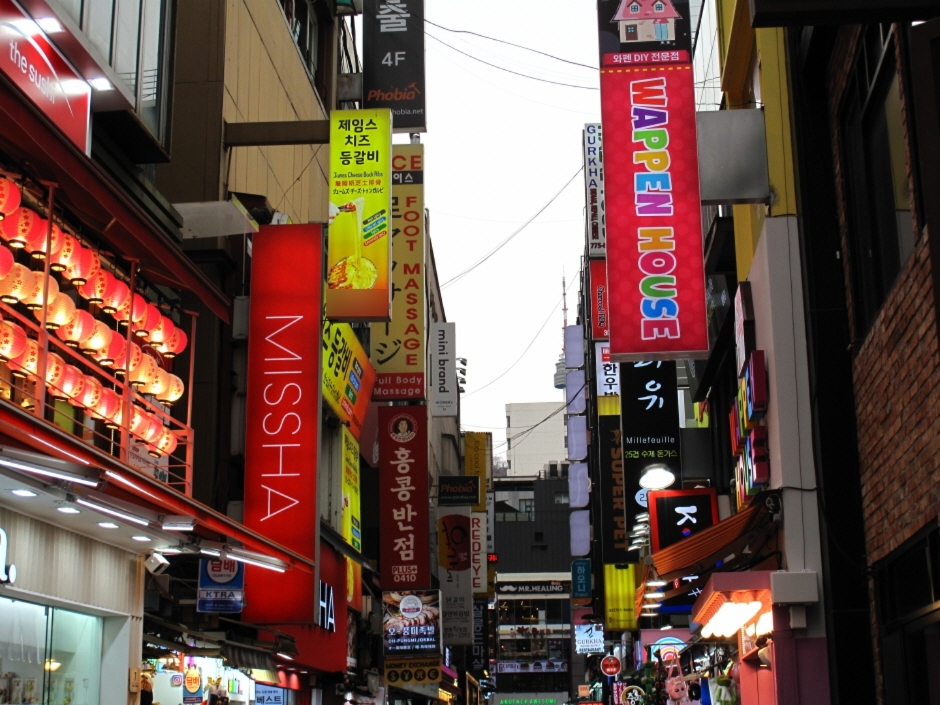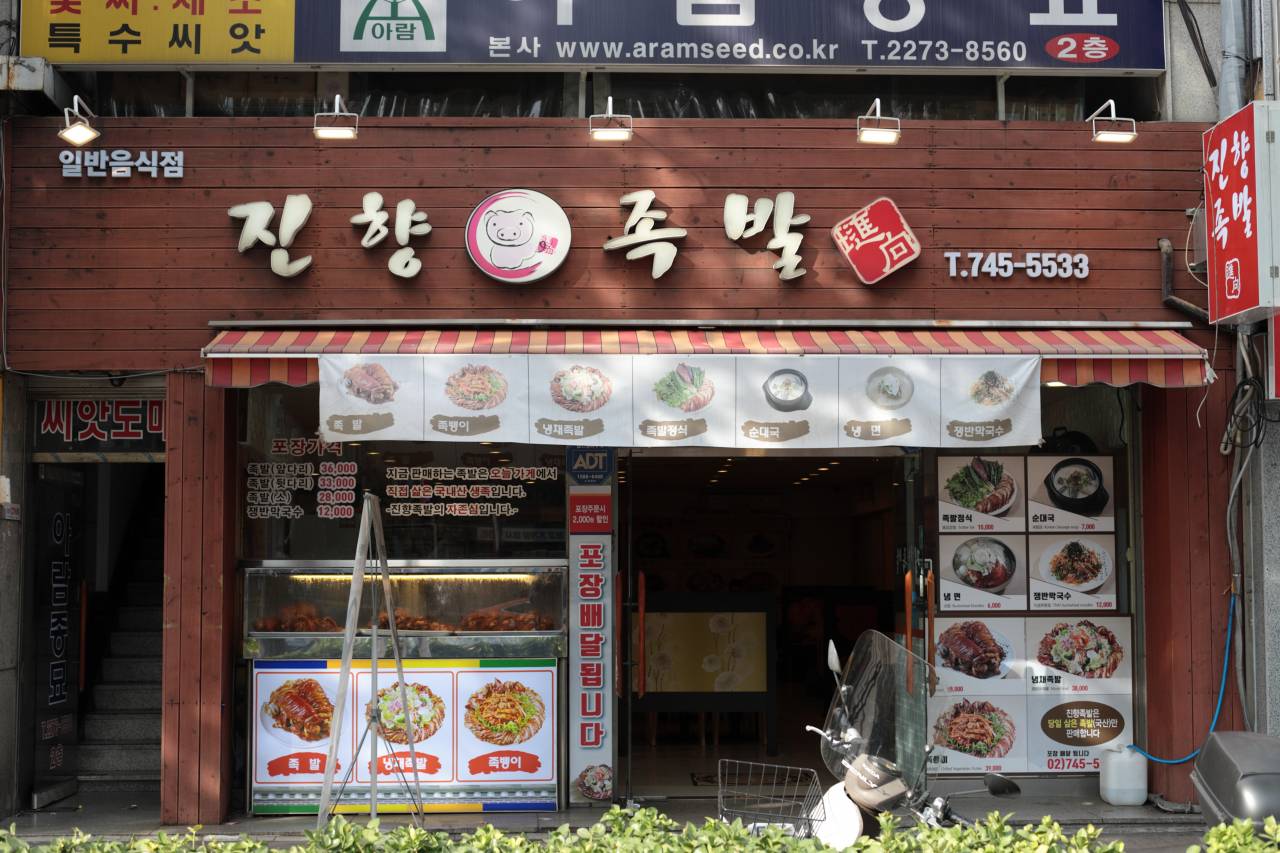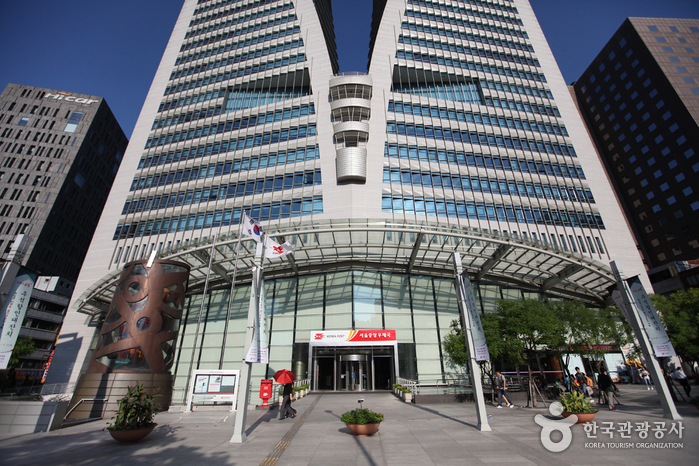James Cheese Deunggalbi Myeongdong (제임스치즈등갈비 명동)
7.6Km 2024-03-11
13, Myeongdong 10-gil, Jung-gu, Seoul
+82-2-318-0192
Situated on Myeongdong Street, James Cheese Deunggalbi specializes in deunggalbi (grilled pork galbi). The main dish here is grilled back ribs with cheese, which is characterized by the harmonious combination of Korean food and cheese. Served with bokkeum bap (fried rice) and gyeran jjim (steamed eggs) riceballs, the dish has a richer flavor with less spiciness. The best part is that customers can choose the amount of cheese and the spiciness of the dish, so they can personalize it to their liking.
Jinhyang Jokbal (진향족발)
7.6Km 2024-10-15
231-1, Jong-ro, Jongno-gu, Seoul
+82-2-745-5533
A pig's trotter(s) specialty restaurant located near Jongno 5(o)ga Station in Seoul. One of the top 5 jokbal (pig's trotter) restaurants in Seoul. This restaurant's signature menu is braised pigs' feet.
The Handsome Tommy Hilfiger - Myeong-dong Branch [Tax Refund Shop] (한섬 타미힐피거 명동)
7.6Km 2024-04-18
11, Myeongdong 6-gil, Jung-gu, Seoul
-
Olive Young - Sinseol-dong Station Branch [Tax Refund Shop] (올리브영 신설동역)
7.6Km 2024-04-16
4, Wangsan-ro, Dongdaemun-gu, Seoul
-
PAIK's NOODLE Myeongdong (홍콩반점0410(명동점))
7.6Km 2024-03-08
13, Myeongdong 10-gil, Jung-gu, Seoul
02-778-0410
Located in Myeongdong Street, PAIK's NOODLE is a Chinese restaurant that serves Korean-style Chinese cuisine. The price is affordable so that both Koreans and foreigners can easily enjoy chinese dishes. The restaurant focus on jjajang myeon (black bean sauce noodles) and jjamppong (Spicy seafood noodle soup). It's a great place to grab a bite to eat when you're hungry while sightseeing in Myeongdong.
Seoul Hyochang Park (서울 효창공원)
7.6Km 2024-07-09
177-18 Hyochangwon-ro, Yongsan-gu, Seoul
+82-2-2199-7608
Hyochang Park covers 122,245 square meters spanning across Hyochang-dong and Cheongpa 2-dong. It is a historic landmark that once contained several royal tombs, and was known at that time as Hyochangwon. The cemeteries that were originally located in Hyochangwon belonged to Crown Prince Munhyo, King Jeongjo’s first son who died at the age of five; Royal Noble Consort Uibin of the Seong Clan, King Jeongjo’s royal concubine and Crown Prince Munhyo’s mother; Royal Noble Consort Sugui of the Park Clan, King Sunjo’s royal concubine; and her daughter Princess Yeongon. The royal tombs were moved to Seooreung Tombs in the waning months of the Japanese colonial period. The Japanese empire began the development of Hyochangwon into a park in 1924, and the Japanese governor-general officially assigned the site as a park in 1940.
Presently, several of Korea’s greatest leaders are buried in Hyochang Park. The remains mostly belong to independence activists including Yoon Bong-gil, Lee Bong-chang, and Baek Jeong-gi, whose graves are collectively known as Samuisa Tomb. A statue of Lee Bong-chang has been built in the graveyard. Among the other patriotic martyrs who are interred in the park are Kim Gu and some of the key figures of the provisional government such as Lee Dong-nyeong, Cha I-seok, and Cho Seong-hwan. An ancestral shrine named Uiyeolsa has been built along the main gate and holds the portraits of the deceased independence activists.
Lotte Himart - Songpa Lotte Mart Branch [Tax Refund Shop] (롯데하이마트 송파롯데마트점)
7.6Km 2024-04-18
80, Jungdae-ro, Songpa-gu, Seoul
-
Lotte Mart - Songpa Branch [Tax Refund Shop] (롯데마트 송파점)
7.6Km 2024-04-22
80, Jungdae-ro, Songpa-gu, Seoul
-
Converse - Myeong-dong Branch [Tax Refund Shop] (컨버스 명동점)
7.6Km 2024-06-27
16-1, Myeongdong 8-gil, Jung-gu, Seoul
-
Korea Postage Stamp Museum (우표박물관(구.우표문화누리))
7.6Km 2024-03-06
B2, 70, Sogong-ro, Jung-gu, Seoul
+82-2-6450-5600
The Korea Postage Stamp Museum was established to promote stamp culture. Here, visitors can explore the history of stamps throughout the ages, with a wide variety of subjects and types. Its main facilities include Postal Service History, Hands-on Postage Stamp Experience, Informative Postage Stamps, and Philately Classroom. Reservations are required for weekend tours and can be made on the website.


![The Handsome Tommy Hilfiger - Myeong-dong Branch [Tax Refund Shop] (한섬 타미힐피거 명동)](http://tong.visitkorea.or.kr/cms/resource/47/2888847_image2_1.jpg)
![Olive Young - Sinseol-dong Station Branch [Tax Refund Shop] (올리브영 신설동역)](http://tong.visitkorea.or.kr/cms/resource/24/2888624_image2_1.jpg)

![Lotte Himart - Songpa Lotte Mart Branch [Tax Refund Shop] (롯데하이마트 송파롯데마트점)](http://tong.visitkorea.or.kr/cms/resource/80/2879480_image2_1.jpg)
![Lotte Mart - Songpa Branch [Tax Refund Shop] (롯데마트 송파점)](http://tong.visitkorea.or.kr/cms/resource/79/2879479_image2_1.jpg)
![Converse - Myeong-dong Branch [Tax Refund Shop] (컨버스 명동점)](http://tong.visitkorea.or.kr/cms/resource/46/2878646_image2_1.jpg)

 English
English
 한국어
한국어 日本語
日本語 中文(简体)
中文(简体) Deutsch
Deutsch Français
Français Español
Español Русский
Русский